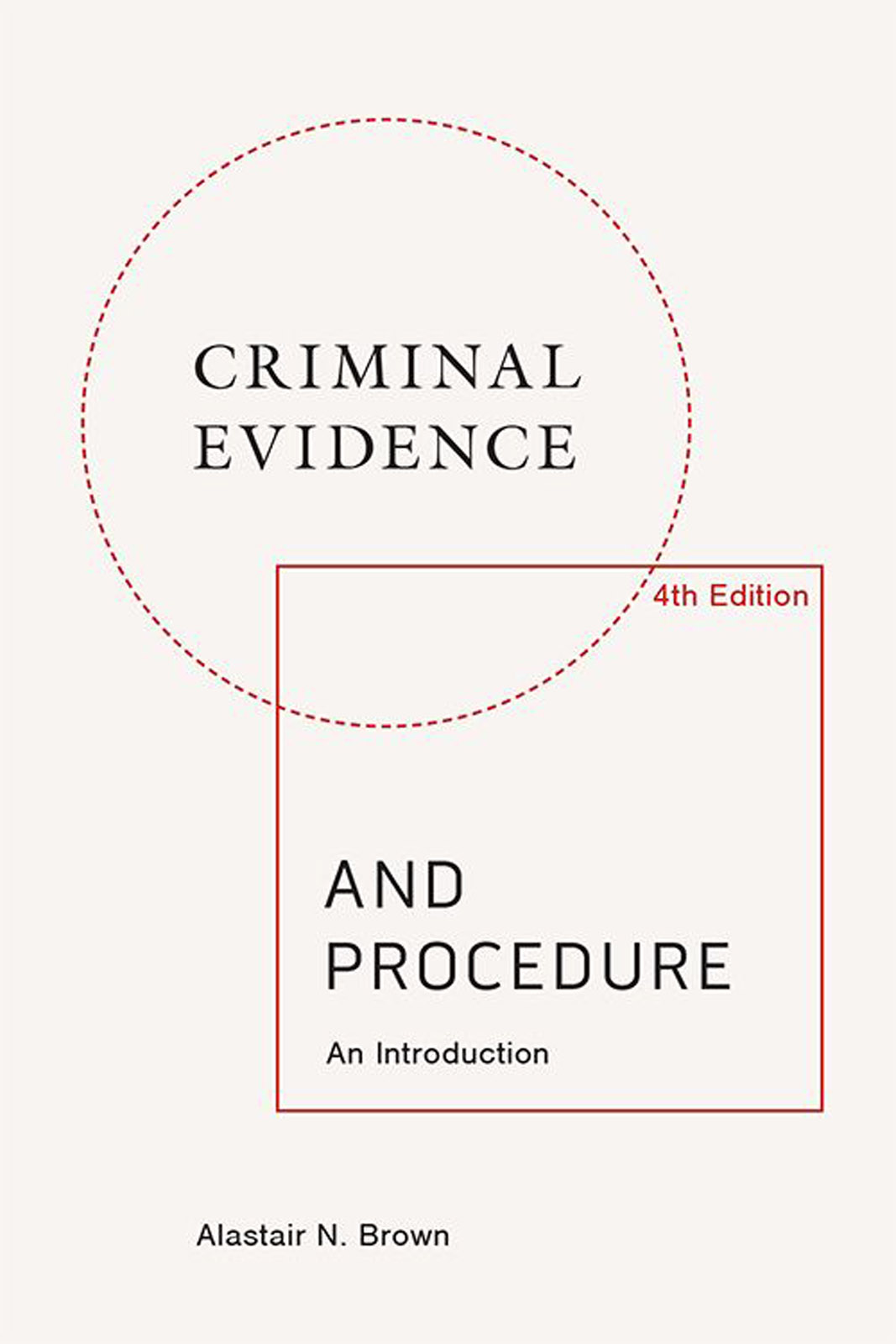Book Reviews
Criminal Evidence and Procedure: An Introduction (4th edition)
Alastair N Brown
PUBLISHER: EDINBURGH UNIVERSITY PRESS
ISBN: 978-1474494663
PRICE: £28 to pre-order using coupon New30 before publication on 28 February 2022, otherwise £39.99
 It has been 12 years since the publication of the previous edition of Sheriff Brown’s book. Over that period there have been significant developments in the law and practice of criminal evidence and procedure. Legislative changes include sentencing aggravation in domestic offences, hate crime and an overhaul of the powers of arrest and rights of the suspect. While the “rape shield” provisions were in place when the previous edition was published, they have undergone significant interpretation by the courts.
It has been 12 years since the publication of the previous edition of Sheriff Brown’s book. Over that period there have been significant developments in the law and practice of criminal evidence and procedure. Legislative changes include sentencing aggravation in domestic offences, hate crime and an overhaul of the powers of arrest and rights of the suspect. While the “rape shield” provisions were in place when the previous edition was published, they have undergone significant interpretation by the courts.
A consistent comment made about the previous edition of this book was that it identified clearly the principles on which criminal evidence and procedure are founded. Again, Brown takes us back to basics and demonstrates the principles drawn from case law and, with this solid foundation, the author builds, drawing attention to more recent case law and how the practical application of those principles has developed. The book is peppered with reference to the jurisprudence of the European Court of Human Rights, making it abundantly clear that within this jurisdiction, the Lord Advocate and those who act in the prosecution service on her behalf are bound to act in compliance with Convention rights.
The work follows the structure of the Criminal Procedure (Scotland) Act 1995 (as amended) and takes us through the framework of the courts, jurisdiction, solemn and summary procedure, and sentencing. For students, the end of each chapter has a recap of the main points.
It has been said that some other texts in these areas of criminal law repeat the terms of legislation and case law but add little by way of description, interpretation or practical application of the law. Not so in this text. There is discussion of a principle followed by reference to a relevant passage from authority. This approach enables the reader to understand how the law is applied in practice.
There are three areas which merit particular reference. Those are where the author discusses the circumstances in which an application under s 275 with reference to s 274 requires to be made, the new provisions on arrest, and the special measures available to vulnerable witnesses. In relation the last of these, he writes: “unfortunately, the arrangement and drafting of the provisions makes no concessions to the need of the user for clear legislation which is easy to navigate”. He makes the nature of the provisions and the availability of their practical application abundantly clear. The discussion on the interplay and practical application of ss 274 and 275, sections which are now crucial for any practitioner appearing before the criminal courts to understand, is an example of the clarity which Brown brings to better that understanding. It is the clearest yet. The main cases and principles are described, and the practitioner is then well equipped the study the area in greater depth relative to the issues they need to consider in the particular circumstances of their case.
While the author makes clear this is not a book about advocacy, he makes frequent reference to why poor advocacy and a lack of understanding of what the advocate seeks to achieve through questioning, diminishes the assessment of the evidence which is elicited. As he makes clear, it is more effective to suggest a witness may be mistaken as opposed to a direct challenge that they are deliberately seeking to mislead the court. He also observes witnesses may have a clearer recollection of events in the retelling of their evidence. One might venture to suggest that he finds the current practice of cross-examination, based on challenging witnesses with singular reference to their previous statements, to be a less effective form of advocacy.
This book may be titled an introduction. However, it is much more than that. It would be as valuable to the practitioner as to the student.
This erudite text, written in the clearest language, is a significant contribution to the library of any practitioner in criminal law and should be in the pocket of everyone who appears before the court. It provides ready access to the most important issues and case law.
David J Dickson, solicitor advocate
Regulars
Perspectives
Features
Briefings
- Human rights: Gendered passports survive challenge
- Pensions: Are employers ready for the challenge?
- Succession: Putting it right: scope of the s 3 remedy
- Property: When the debtor defaults
- In-house: Starting an in-house career, in the house!
- Criminal court: New year, familiar issues
- Employment: Is a "right to disconnect" on the horizon?
- Family: Parens patriae: a cross-border issue






